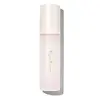What's inside
What's inside
 Key Ingredients
Key Ingredients

No key ingredients
 Benefits
Benefits

 Concerns
Concerns

 Ingredients Side-by-side
Ingredients Side-by-side

Water
Skin ConditioningDimethicone
EmollientMethyl Trimethicone
Skin ConditioningDipropylene Glycol
HumectantGlycerin
HumectantButylene Glycol
HumectantVinyl Dimethicone/Methicone Silsesquioxane Crosspolymer
Dimethicone/Vinyl Dimethicone Crosspolymer
Skin ConditioningCetyl PEG/PPG-10/1 Dimethicone
EmulsifyingSodium Chloride
MaskingDimethicone/PEG-10/15 Crosspolymer
Silica
AbrasivePropanediol
SolventSodium Benzoate
MaskingPotassium Sorbate
PreservativeTocopheryl Acetate
AntioxidantEclipta Prostrata Extract
Skin ConditioningGlyceryl Acrylate/Acrylic Acid Copolymer
HumectantParfum
MaskingCamellia Sinensis Leaf Extract
AntimicrobialSodium Citrate
BufferingMelia Azadirachta Leaf Extract
Skin ConditioningHyaluronic Acid
HumectantHydrolyzed Hyaluronic Acid
HumectantSodium Hyaluronate
HumectantGardenia Florida Fruit Extract
Skin ConditioningNelumbo Nucifera Flower Extract
Skin ConditioningNymphaea Odorata Root Extract
RefreshingMoringa Oleifera Seed Oil
EmollientTocopherol
AntioxidantWater, Dimethicone, Methyl Trimethicone, Dipropylene Glycol, Glycerin, Butylene Glycol, Vinyl Dimethicone/Methicone Silsesquioxane Crosspolymer, Dimethicone/Vinyl Dimethicone Crosspolymer, Cetyl PEG/PPG-10/1 Dimethicone, Sodium Chloride, Dimethicone/PEG-10/15 Crosspolymer, Silica, Propanediol, Sodium Benzoate, Potassium Sorbate, Tocopheryl Acetate, Eclipta Prostrata Extract, Glyceryl Acrylate/Acrylic Acid Copolymer, Parfum, Camellia Sinensis Leaf Extract, Sodium Citrate, Melia Azadirachta Leaf Extract, Hyaluronic Acid, Hydrolyzed Hyaluronic Acid, Sodium Hyaluronate, Gardenia Florida Fruit Extract, Nelumbo Nucifera Flower Extract, Nymphaea Odorata Root Extract, Moringa Oleifera Seed Oil, Tocopherol
Water
Skin ConditioningPropanediol
SolventGlycolipids
Skin ConditioningCurcuma Longa Root Extract
MaskingCrocus Sativus Flower Extract
MaskingEvodia Rutaecarpa Fruit Extract
Skin ConditioningPrunus Armeniaca Fruit Extract
Skin ConditioningSodium Cocoyl Glycinate
CleansingMaltooligosyl Glucoside
Skin ConditioningHydrogenated Starch Hydrolysate
HumectantDiethylhexyl Syringylidenemalonate
Skin ProtectingGlycerin
HumectantCaprylic/Capric Triglyceride
MaskingLactic Acid
BufferingCitric Acid
BufferingPhenoxyethanol
PreservativePotassium Sorbate
PreservativeDehydroacetic Acid
PreservativeBenzyl Alcohol
PerfumingSodium Benzoate
MaskingCI 14700
Cosmetic ColorantWater, Propanediol, Glycolipids, Curcuma Longa Root Extract, Crocus Sativus Flower Extract, Evodia Rutaecarpa Fruit Extract, Prunus Armeniaca Fruit Extract, Sodium Cocoyl Glycinate, Maltooligosyl Glucoside, Hydrogenated Starch Hydrolysate, Diethylhexyl Syringylidenemalonate, Glycerin, Caprylic/Capric Triglyceride, Lactic Acid, Citric Acid, Phenoxyethanol, Potassium Sorbate, Dehydroacetic Acid, Benzyl Alcohol, Sodium Benzoate, CI 14700
 Reviews
Reviews

Ingredients Explained
These ingredients are found in both products.
Ingredients higher up in an ingredient list are typically present in a larger amount.
Glycerin is already naturally found in your skin. It helps moisturize and protect your skin.
A study from 2016 found glycerin to be more effective as a humectant than AHAs and hyaluronic acid.
As a humectant, it helps the skin stay hydrated by pulling moisture to your skin. The low molecular weight of glycerin allows it to pull moisture into the deeper layers of your skin.
Hydrated skin improves your skin barrier; Your skin barrier helps protect against irritants and bacteria.
Glycerin has also been found to have antimicrobial and antiviral properties. Due to these properties, glycerin is often used in wound and burn treatments.
In cosmetics, glycerin is usually derived from plants such as soybean or palm. However, it can also be sourced from animals, such as tallow or animal fat.
This ingredient is organic, colorless, odorless, and non-toxic.
Glycerin is the name for this ingredient in American English. British English uses Glycerol/Glycerine.
Learn more about GlycerinPotassium Sorbate is a preservative used to prevent yeast and mold in products. It is commonly found in both cosmetic and food products.
This ingredient comes from potassium salt derived from sorbic acid. Sorbic acid is a natural antibiotic and effective against fungus.
Both potassium sorbate and sorbic acid can be found in baked goods, cheeses, dried meats, dried fruit, ice cream, pickles, wine, yogurt, and more.
You'll often find this ingredient used with other preservatives.
Learn more about Potassium SorbatePropanediol is an all-star ingredient. It softens, hydrates, and smooths the skin.
It’s often used to:
Propanediol is not likely to cause sensitivity and considered safe to use. It is derived from corn or petroleum with a clear color and no scent.
Learn more about PropanediolSodium Benzoate is a preservative. It's used in both cosmetic and food products to inhibit the growth of mold and bacteria. It is typically produced synthetically.
Both the US FDA and EU Health Committee have approved the use of sodium benzoate. In the US, levels of 0.1% (of the total product) are allowed.
Sodium benzoate works as a preservative by inhibiting the growth of bacteria inside of cells. It prevents the cell from fermenting a type of sugar using an enzyme called phosphofructokinase.
It is the salt of benzoic acid. Foods containing sodium benzoate include soda, salad dressings, condiments, fruit juices, wines, and snack foods.
Studies for using ascorbic acid and sodium benzoate in cosmetics are lacking, especially in skincare routines with multiple steps.
We always recommend speaking with a professional, such as a dermatologist, if you have any concerns.
Learn more about Sodium BenzoateWater. It's the most common cosmetic ingredient of all. You'll usually see it at the top of ingredient lists, meaning that it makes up the largest part of the product.
So why is it so popular? Water most often acts as a solvent - this means that it helps dissolve other ingredients into the formulation.
You'll also recognize water as that liquid we all need to stay alive. If you see this, drink a glass of water. Stay hydrated!
Learn more about Water